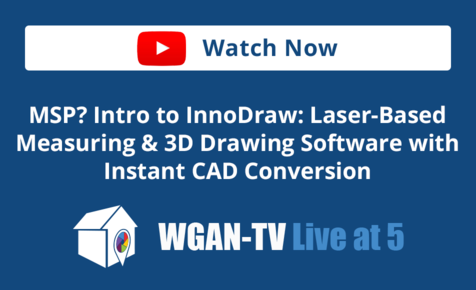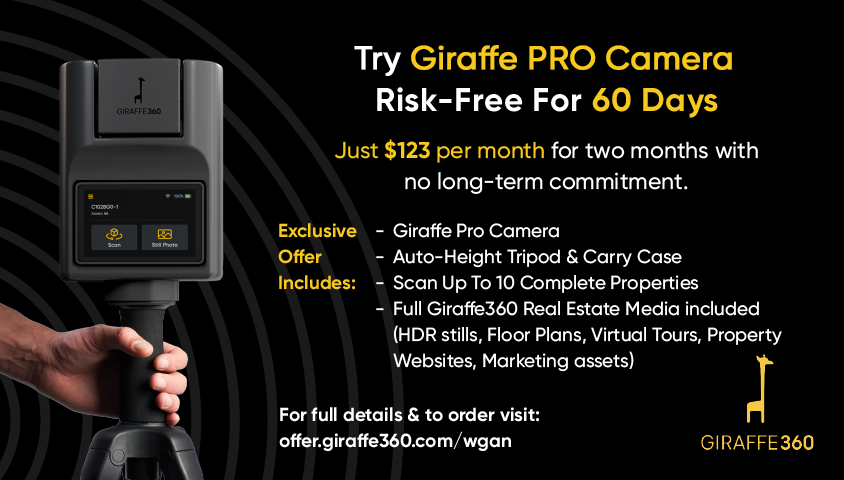Ben Claremont: Ricoh Theta Z1 versus Ricoh Theta X: Which is BETTER?16771
Pages:
1
 WGAN Forum WGAN ForumFounder & WGAN-TV Podcast Host Atlanta, Georgia |
DanSmigrod private msg quote post Address this user | |
| Ben Claremont: Ricoh Theta Z1 versus Ricoh Theta X: Which is BETTER? | Video courtesy of Ben Claremont YouTube Channel | 28 April 2022 Transcript (video above) Ben Claremont: - Ricoh Theta cameras have always been the leader when it comes to point and shoot 360 photography. They've come a really long way since I bought my very first one, the Theta M15, back in 2015, that makes me feel old, to today where the Z1 and X are pushing points in shoot 360 photography to new heights, but with these being the two major camera releases from Ricoh over the past two years, there's actually not that much difference between them. A lot of you have been asking me, what's the difference? Which has better image quality? Should I upgrade from the Z1 to the X, or should I buy something else completely? In this video, I'll answer all of these questions and do my best to cover all of the differences between these two cameras. Starting with the price and it's a $1,000 each versus $800, which is important to keep in mind going forward. Comparing the two designs side-by-side, and while they look similar at first, they're actually very different. I found the X has basically fixed all the problems I initially had with the Z1. For example, this tiny screen only allows for the most basic information to be seen. Whereas with this beauty, look at that, you've got a massive screen which allows you to not only change the settings, but you can look back at your photos, navigate to the plugin store, so you could add third-party plugins right here from the camera, as well as accessing every feature of this camera, you can scroll through hundreds of different settings and change anything you like. Whereas with the Z1, you really do need to connect to the mobile app to change every last setting of the camera. Next problem they fixed is with the USB-C charging. With the Z1 it's on the bottom, whereas with the X, it's on the side. But now with the Z1, that charging port was just too close to the tripod thread, so the side is definitely a better spot for it. Something else I consider one of the biggest flaws of the Z1 is it doesn't have any interchangeable memory or an interchangeable battery. It's all built-in, meaning you have to shoot, charge, download your footage, and then start again. Whereas with the X, look what they've added, we have a battery door with our movable battery and a removable SD card slot, meaning you can put as much memory into this camera as you like. Overall, the design of the X makes it much more user-friendly than the Z1. Next we're going to explore the big question. Which of these two cameras has better image quality? Since they are both primarily photography-focused, image quality is one of the most important factors to compare. Now really quickly, I want to talk about specs. The Theta X has 60 megapixels versus the Theta Z1's 23, but the Theta Z1 has a one-inch sensor, whereas the X only has a half-inch sensor. Meaning, despite the vastly improved image resolution, the end quality, isn't that different. You'll see what I mean in a second, but I only say that to tell you don't obsess about specs because the end results that cameras produce override any impressive specs shape. Now both of these cameras have very different shooting modes, making this comparison impossible to make fair. But the best way I can make it fair is by choosing the best shooting mode for each camera and trying to produce the best result I can with each. Let's start with the X. As you probably know, it doesn't shoot raw, it's only JPGs. While it does have a bracketing option, I've never found bracketing JPGs to be a good idea. The final image quality always ends up worse than it was before, which is why I found using the inbuilt HDR function within the Theta X was the best workflow for producing the best image quality. The Theta Z1 however, has the advantage of being able to shoot raw. While you can shoot with inbuilt HDR like the X, Raw produces a better result. Not only can you shoot in Raw, but you can shoot in Raw plus bracketing using the automated plugin the dual fisheye plugin, which is free to add to the camera, and it produces nine DNG photos which you combine together in Lightroom into a high dynamic range Raw image. In my experience shooting with this camera over the years, this is by far the best workflow for shooting with the Theta Z1. In conclusion, the fairest way for me to compare these two cameras is with the Z1 shooting with a dual fisheye Raw plugin and the X shooting with inbuilt HDR. Now here's the first shot I took using these two workflows. Wait a minute, isn't the Theta X supposed to be like three times resolution? But the main difference I see here, which is a pretty obvious one is the Z1 has much better dynamic range looking at the window, this is the difference between bracketing with Raw and shooting HDR JPEG. While the HDR does a really good job, it doesn't get the brightest highlights. Whereas with bracketing, you can underexpose so much that you capture the outside detail perfectly. Then when merging in Lightroom, it takes that perfect exposure and blends it with everything else. You don't get that with the X, unfortunately. I think we can agree that Theta Z1 with the dual fisheye plugin produces far better dynamic range than the Theta X. I always liked to look at blank walls when doing comparisons because they're always a good indication of how sharp the lines are and how smooth the gradient is on the wall. This is where the Theta X shines. That is a fantastic gradient, very little noise and the line in the corner of the room is definitely sharper. Looking at my plant and points if you know what it's called. Well, do you? It's called Sansevieria, AKA, mother-in-laws tongue. They look really similar. They both capture the highlights and the shadows of this area of the room really nicely. Next, let's look at a higher contrast for in my en-suite bathroom. Wow, can you believe how well the dual fisheye plugin with the Z1 performed here, that blows my mind seriously. That is such good dynamic range. If you want to learn how to do this by the way, I have hours and hours of tutorials inside my virtual tool protocols that teach how to shoot and edit with the dual fisheye plugin using Lightroom and my other top recommended softwares. With this side-by-side, if you were to look at the Theta X without seeing the Z1, you'd think, hey, that's actually quite good dynamic range. Then when you look over to the Z1, you realize what's possible. I do think both cameras passed the test here, but the Z1 with bracketing is definitely the superior camera for dynamic range. I have found that parts of the image can be sharper with the Theta X, especially when the detailing that scene is found in front of either lens. Now here's something they definitely differ on and that is stitching. As you can see, the Z1's lens is roughly twice the size of the Theta X, which means it has a greater view of the full 360 surrounding meaning when you stitch that full 360 from the two double fisheyes, the detail close to the seam line is going to be slightly sharper. That absolutely shows around the stitch line of the image. Here I deliberately put this to the test. The stitch line was facing in-between the yellow and orange pots. With the X, it's blurry as it almost looks like a stitching area, which it isn't, it's just lacking a fair bit of detail around the seam line. Now to be fair, when you zoom out, you don't notice it that much. Stitching is usually the thing that photographers notice more than viewers. But that said, that does also translate over to other things like lens flares. As you can see up the top here, there's a bit of a flare on one lens, but not the other. The seam line has blended it together really awkwardly. Whereas with the X and bracketing, you barely notice that. Speaking of lens flares while we're on the topic, one big point I want to make is that the X performs much better around window frames when it comes to chromatic aberration or purple fringing, I've not touched any sliders here to remove chromatic aberration from either camera. It's pretty noticeable with the Z1 and barely at all with the X. Here's a low light shot I took, and again, these images look really good. Zooming into the chandelier in the Z1 has better dynamic range, especially in those highlights. Both of them generally have a quite a low level of noise. I can't think of any other 360 cameras that will perform this well in low light. In terms of sharpness, again, they look really similar. I guess you could say the X looks slightly sharper and looking at the very darkest part of this shot, and they're both performing well, but I'd say the Z1 definitely has the edge. This is because of the biggest censor. It makes the camera much better in low light, especially really low light. When it comes to shooting outdoors in bright sunlight. Again, they're basically identical. They both shoot extremely crisp images. Look at those leaves. They're not real, but they are crispy sharp. I'd say if you're shooting outdoors, the differences are very, very minor aside from the fact that you can obviously shoot with inbuilt Raw with the Z1, whereas you can't with the X, meaning you can edit these shots a bit more. Also, the Z1 has handheld HDR, and as you may remember, this was one of my biggest complaints with the X is it doesn't have that yet, but supposedly they will be adding it at some point. Now something I need to address is the fact that these cameras do shoot 360 video. The Z1 shoots 4k 360 video, the X shoots 5.7k, both have surprisingly good image quality and retain the great color spectrum that you see in the photos. However, video isn't the primary function of either of these cameras. Therefore, they're not as optimized to shoot it. Right now you could say the X is a fantastic 360 video camera, but it has an inexplicable shaking even when it's on a monopod. In general, the stabilization isn't on the level of Insta360 cameras. But if you did want to shoot a little bit of 360 video on the side or virtual tours or 360 photography, then clearly the Theta X is going to produce far better results. Next, I want to cover another big difference between these two cameras and that is workflow. In fact, I'd even say this is potentially the biggest difference between them and due to the best workflows I discussed earlier, this results in vastly different shooting and editing times. Firstly, with the Z1 to shoot with the dual fisheye plugin requires putting it on a monopod and waiting for the sequence to fire off over 30-45 seconds, whereas the X shoots a photo in less than one second. Then when it comes to editing Raw, bracketed 360 photos with the Z1, it's going to take you on average 5-10 minutes per photo to merge the bracketed shots and color, correct. Whereas with the Theta X, the images are good to go straightaway. You don't need to color correct them. The colors look great, the contrast is good, the dynamic range is good enough, meaning the workflow with the X can be literally one second if you want it to be, if you do want to color correct, it will take you 1-2 minutes since you're not having to bracket and sought through hundreds of photos from a single shoot. I think we have a pattern emerging here. The Theta X is the right camera to use if you don't want to spend long on your shoots and edits, if you just want to shoot a photo quickly and be done with it and no editing needed, then this is going to be the better option. If you're someone that prefers to take more time shooting and editing to get a higher quality result, then the Z1 is going to be the better choice because the end results are in fact better than the Theta X, but not that much, they are better, but it depends on your use case for your 360 photos. If it's for a medium to high-end professional shoot, of course, you need to take the time to shoot and edit properly. But if you just want to shoot quickly for a real estate shoot or even just for fun, then you don't want to be spending hours editing your shots and dealing with a longer workflow, the shooting workflow is also made much easier by the big touchscreen, meaning you don't need to connect the X to your phone. You can change all the settings on the camera, including accessing the plugin store if you want to use a plugin, and you can even view your shots as well. Whereas with the Z1 there's a lot more toing and froing between the camera and your phone, and the camera and your computer. Also another smaller one when it comes to workflow is that the Theta X stitches in camera both photos and videos, whereas the Z1, especially if you're using the bracketing technique, you're going to have to stitch them in Ricoh Theta Stitcher after you've done all of your editing and color correction, again, you can learn this entire workflow in my Virtual Tour Pro course. The main differences I see between the Theta Z1 and the Theta X is the shooting and editing time. The X is shorter, the Z1 is longer. The dynamic ranging quality is better with the Z1. The X shoots better 360 video and has a far better design. Also, it's currently $200 cheaper. You need to ask yourself which of these things is most important to you because that should influence your decision between these two cameras. I've had a lot of people ask me, should I upgrade from the Z1 to the X? I think you can tell after watching this video that my answer will be no. Unless you want to speed up your workflow, the Z1 is going to produce better shots than the X. I do think though if you're upgrading from anything else like an old gear 360 then either of these cameras would be a massive upgrade. These are two of the best point-and-shoot 360 cameras you can buy if you're shooting virtual two is the image quality is really good. The workflow is generally pretty fast and they really are the perfect weapon of choice, especially if you're shooting for small to medium-sized clients. I'm going to finish this video by answering the question, should you buy something else? I probably wouldn't choose any other middle of the range cameras because while some of them boast high resolution and great features, they often have some fatal flaws that make the camera a nightmare to work with. If you're at the point where you want to shoot even higher-quality images, then you may want to consider shooting 360s with a DSLR. Otherwise, I think the Thetas Z1 is going to be the best you can get from a point and shoot 360 camera. If you're on a budget of under $500, clearly neither of these cameras fits that, so I'd recommend this, the Trisio Lite 2. Got a full review on my channel which you can watch about that. Or if you shoot mostly 360 video and not so much 360 photo, then obviously Insta360 cameras are going to be the right choice. Which is your camera of choice between these two, the Z1 or the X? Let me know down below. ---  Save 15% with WGAN Affiliate Link for Virtual Tour Pro and Coupon Code: WGANVTP |
||
| Post 1 • IP flag post | ||
Pages:
1This topic is archived. Start new topic?

















